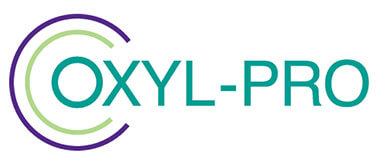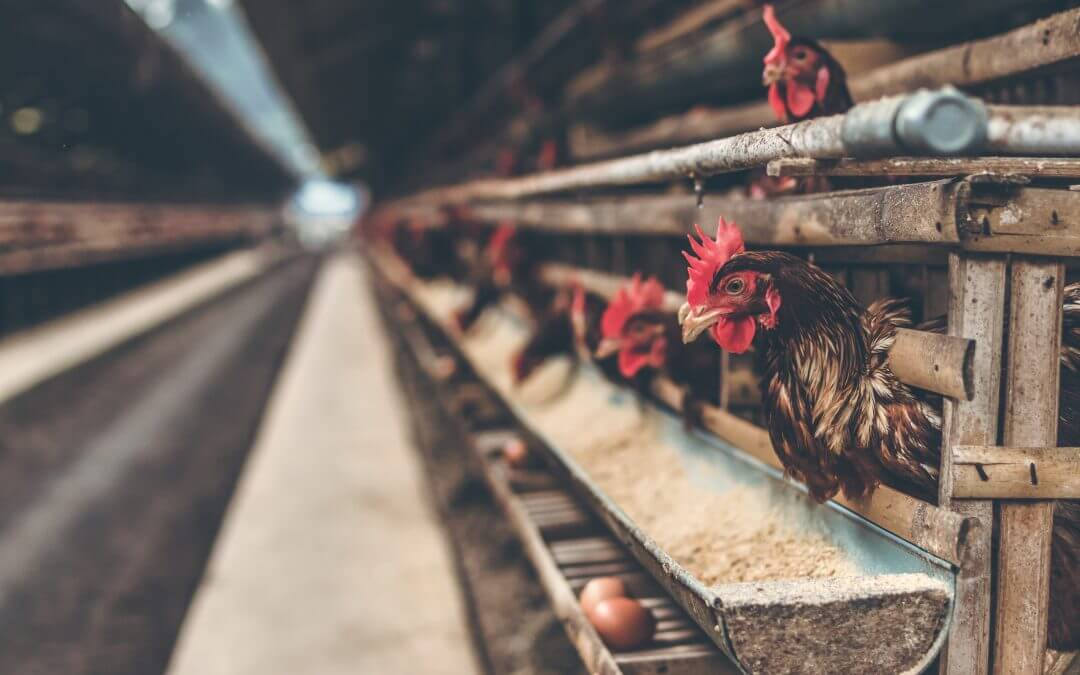Used as part of a health management programme, a good poultry farm disinfectant will help to protect poultry from diseases, infections and parasites.
There are two critical aspects to this:
- Following a rigorous and regular process, and
- Applying an effective DEFRA approved disinfectant.
Health Risks to Poultry on the Farm
Health management of poultry is about preventing disease, recognising disease early on, and treating it as soon as possible.
There are various health risks to poultry on the farm. Poultry can suffer from non-infectious diseases, arising from nutrient deficiencies, physical damage or consuming toxic substances, but these diseases do not pass from bird to bird.
However, infectious diseases do. And it is these diseases that poultry farm disinfectants can help to prevent or eradicate.
There is a range of pathogens that one bird can transfer to another, including:
- Viruses
- Fungi
- Bacteria
- Protozoa
- Internal and external parasites.
The smallest pathogens are viruses, but their size is no indicator of their potential harmfulness.
Even though viruses are only viewable through sophisticated microscopes, they can do immense harm to poultry.
Once a virus invades the cell of an animal or bird, it can multiply, going on to invade other cells, causing visible signs of infection.
Strong hygiene methods combined with quarantine, where necessary, are the best methods for combating viruses. In addition, a vaccination programme should then help maximise immunity of poultry.
Fungi are plant-based, and they multiply by forming spores and releasing them into the environment. Given the right conditions, these spores will grow and repeat this cycle. Fungi can grow in a bird’s respiratory system, or produce toxins in the food that birds consume.
Bacteria are smaller than fungi and are single-cell organisms. They multiply by dividing into two, and they can do this rapidly where they find a suitable host or environment. Some perish quickly, but others are resilient, with a tough protecting cell wall.
Bacteria can be gram positive or gram negative, which affects how they respond to disinfectants.
They harm birds by attacking cells or spaces between cells, or by producing harmful toxins.
Mycoplasma is an example of a gram negative bacteria. It is a simple, single-cell organism, but it can cause respiratory disease.
Protozoa are one-celled organisms, like bacteria but larger. Some can multiply in very large numbers rapidly, due to their complex reproductive systems. Generally, they harm birds by destroying tissue.
An example of a poultry disease caused by protozoa is coccidiosis. This damages the intestinal system of the host bird and has been known to have a major impact on the poultry industry globally.
Internal parasites in poultry include large round worms and tape worms. External parasites include poultry lice and mites. Regular cleaning of poultry houses should help prevent them.
How Often Should You Clean a Poultry House?
Periodic cleaning of a poultry house will largely depend on the size of the poultry house and the number of chickens you keep.
However, there are various levels of cleaning to carry out at different periods.
Removing unused food and water is a daily job, whereas scraping, scrubbing and replacing old bedding can be weekly.
At turnaround, do a thorough deep clean with a DEFRA approved poultry farm disinfectant.
As important as the routine of cleaning and disinfecting is the thoroughness of these processes and the equipment you use.
What Equipment Should You Use?
For regular poultry house cleaning, you should use a stiff brush, a scraper, a small shovel, and a bucket of water.
Deep cleaning requires a pressure water spray, and a good, mild detergent.
Use the scraper and brush for cleaning off dried droppings, then brush up the remaining debris.
For a deep clean, follow a soaking, washing and rinsing regime using warm water, a mild detergent and a low pressure spray to penetrate and remove all organic matter.
You can switch to high pressure spray once you’ve removed the debris, to thoroughly clean surfaces.
Once you have rinsed these cleaned surfaces carefully, you will need to dry the poultry house thoroughly to prepare for disinfection.
When applying disinfectant to clean a poultry house, you should apply it to all surfaces, but also flush out the water supply.
You can apply a poultry farm disinfectant using a spray. Remember to apply this evenly to all surfaces, from the apex of the poultry house roof right down to the flooring.
How to Spot Signs of Disease in Poultry
It’s important to identify any visual clues or other outward signs of disease in poultry, such as:
- Loss of feathers
- Ruffled feathers
- Drooped wings
- Dull or closed eyes
- General activity
- Birds sitting on their haunches or lying down
- Abnormal droppings
- Discharges.
Certain diseases are notifiable animal diseases, which means they are either endemic or exotic. Where this is the case, you must notify the Animal and Plant Health Agency (ALPHA) or DEFRA.
One example of this in poultry is Newcastle disease virus (NDV), which is an acute respiratory infection. Signs of this in birds include coughing and sneezing or other respiratory distress, nervous signs, depression, lack of appetite and diarrhoea.
Choosing the Right Poultry Disinfectant
Various disinfectants are suitable for poultry house use, including phenolic compounds, iodine or iodophors, chlorine compounds and oxidising compounds. In the UK they should be DEFRA approved.
Oxyl-Pro Pollo is a hydrogen peroxide-based disinfectant, with no smell, colour or taste. It is 99.999% effective against Salmonella, E coli and Campylobacter and is DEFRA approved.
For more information, please complete our contact form, call us on +44 1606 851 782, or email us at enquiries@oxylpro.com

